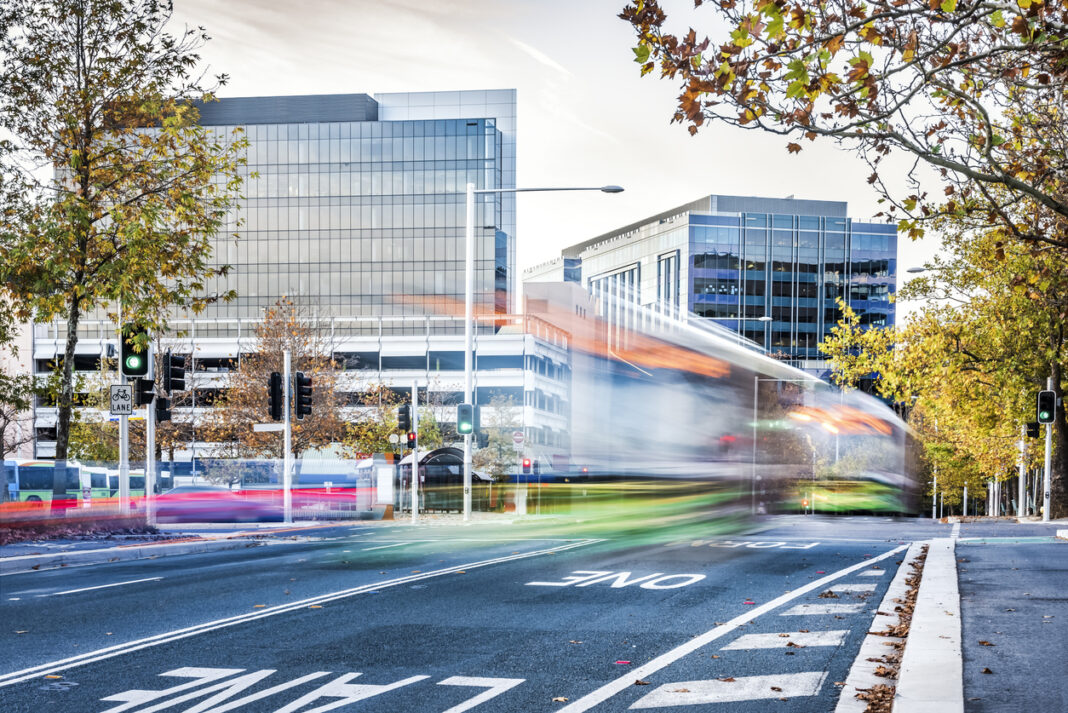More than 100 bus manufacturers, energy companies, electric bus charging station companies, training and skills providers, and construction companies have registered as part of pre-procurement market sounding for the ACT’s zero-emission electric bus fleet.
“The procurement of new battery electric buses has attracted wide interest and gives us confidence of getting the right solution to successfully transition our fleet to zero emissions,” said ACT Minister for Transport and City Services, Chris Steel.
The ACT Government has committed to transition the entire bus fleet to zero emissions by 2040 or earlier. Last year, it announced it would buy 90 battery electric buses and associated operating requirements (charging infrastructure, maintenance, and energy supply) – part of a scheme to replace every diesel and compressed natural gas bus in Transport Canberra’s fleet by 2024.
Transport is the ACT’s largest source of greenhouse gas emissions, accounting for 57% of total emissions in 2019–20. Mr Steel expected the buses would reduce the fleet’s emissions by more than 20%, or around 7,000 tonnes of carbon dioxide a year, on par with what is happening in other jurisdictions.
The NSW Government wants to replace its 8,000 diesel buses with electric vehicles by 2030; Sydney received its first electric bus last month, the first of 120 in NSW this year. Victoria is also investing $20 million to make its bus fleet emissions-free; it has 48 hybrid vehicles and one electric bus.
“A zero-emissions bus fleet will further cement the ACT’s place as one of the leading jurisdictions to take strong, effective and real action on climate change whilst improving public transport for passengers,” Mr Steel said.
A formal tender will be released to market in the third quarter of 2021, and the final buses will be delivered no later than 2024. The government will brief industries about their requirements to procure the first 90 buses, and the associated charging infrastructure. The current market soundings will inform the preferred procurement approach.
In the meantime, 34 buses will replace the remaining orange Renault PR100 series buses, which pre-date euro-emissions standards, and are not wheelchair or pram accessible. Transport Canberra will begin the tender process by July, in the form of an open Request for Proposal to suppliers of low-emission diesel and zero-emission electric buses.
“These buses will be procured via a short-term lease, providing a modern, disability accessible fleet to support Canberra’s bus operations while we build the infrastructure needed to grow our zero-emissions fleet,” Mr Steel said.
The government will also train the workforce – bus drivers, transport managers and diesel mechanics – to maintain and operate the new fleet, as stated in the Zero-Emission Transition Plan for Transport Canberra.
Diesel buses will still be maintained and operated until at least the late 2030s, the ACT Government stated, as these buses are progressively phased out and replaced with zero-emission vehicles, such as battery electric buses.
The Australian Manufacturing Workers’ Union (AMWU) was closely involved in the development of this plan, an ACT Government spokesperson said; a union representative formed part of the expert steering committee.
Both the AMWU and Transport Workers’ Union (TWU) are kept up to date on the transition through their regular meetings with Transport Canberra, the spokesperson said.
They said early feedback from both the workforce and unions has been positive, and staff are enthusiastic to be part of this transition. Dedicated noticeboards and toolbox meetings keep staff up to date on the project, let them comment, and answer any questions.
The Industry Project Brief on the first 90 battery electric buses and the Zero-Emission Transition Plan for Transport Canberra are on the Transport Canberra and Tenders ACT websites. The formal market sounding process ends in April.
For more news:
- Fifth active case of COVID-19 in ACT hotel quarantine
- ACT’s first AstraZeneca vaccinations ‘a real milestone’
- Intermediaries help vulnerable witnesses tell their stories



